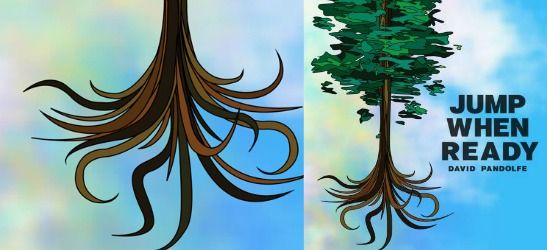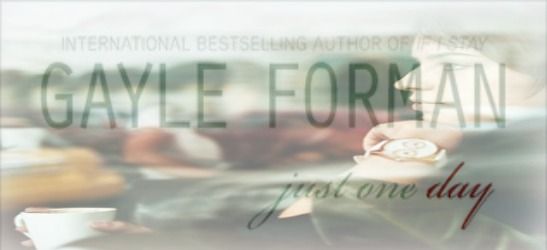Author Barbara Shoup’s newest young adult novel, “Looking for Jack Kerouac” (August 12, Lacewing Books), whisked her away on a fascinating journey where legends came to life more than 1,000 miles away from her hometown.
With the help of a grant from the Indiana Arts Commission, Shoup embarked on a road trip that took her from central Indiana to St. Petersburg, Fla., the same adventure taken by the characters in her latest book. In “Looking for Jack Kerouac,” Paul Carpetti picks up a copy of “On the Road” by legendary beat novelist Jack Kerouac during a class trip in New York City. The book has a dramatic impact on Paul, changing his whole outlook on life. But when he returns home from the city, his world crumbles. It’s 1964, and Paul is dealing with the death of his mother. He needs to get away.
Paul hops in a car with his friend, Duke, and doesn’t look back. The two land in Florida where Paul finds Kerouac, who turns out to be nothing like the author he idolized. But, in the end, the writer helps Paul in his journey to self-discovery in an unexpected way.
“Looking for Jack Kerouac” is a coming-of-age tale with heart. Relying on notes she jotted down on
her way to Florida’s Gulf Coast, as well as extensive research on Kerouac’s life, Shoup writes with
intensity, passion and poignant reflection.
Where did the idea for “Looking for Jack Kerouac” come from?
A friend and fellow writer told me about his idea for a screenplay called “Looking for Jack
Kerouac” with similar story line. I thought it sounded like a terrific idea for a young adult novel and
said, joking, “If you ever decide you don’t want to do the screenplay, could I have the idea?” A few
years later, he said, “Remember that Kerouac idea? I’m not going to do it, so you can have it if you
want it.” “Cool,” I said. “Thanks!” But it was just an idea and I had a hard time finding a way to make it my own.
Then, sadly, one of my sisters died of brain cancer. Not long after her death, an image of her
behind the counter of a diner floated into my mind’s eye. There was Ginny! One of the most painful
things about my sister’s illness and death was watching her two teenage sons go through it and, after I
found Ginny (and the idea that I could, in a way, bring my sister back to life through her), it occurred to me that Paul might have had the same experience as my oldest nephew. At which point the book
became about a whole lot more than a road trip for me. It was a way of processing my own grief about my sister and trying to better understand what losing their mother had been like for her boys.
What are the differences between the real Jack Kerouac and the man portrayed in your book?
My personal understanding of the real Jack Kerouac came from reading everything he’d
written, as well as reading biographies and memoirs by those who knew him, which revealed a
complexity that humanized the icon he’s become. He was brilliant, driven, ambitious in his work. He
was arrogant, difficult, reckless, rebellious; generous, tender, sad, kind, wrecked. He was drop-dead
handsome; he was shy with women. He was free-wheeling and adventurous; he spent most of his life
off the road living with his mother, who did factory work to support him. He was obsessed with
baseball and, to his death, played a baseball card game he invented when he was a boy. He admired the tenets of Buddhism and worked to synthesize him with his Catholic beliefs, but by the end of his life he’d reverted to Catholic beliefs so conservative that some called them medieval. He craved and hated the fame that came his way. He died of alcoholism at the age of 47, while sharing a small, cramped house with his mother in St. Petersburg, Florida.
I tried to make my fictional Kerouac as close as I could to what I understood the real to have
been. It was important to me that readers see him not as the icon, but as a man whose life had not
turned out happily, but whose generosity in acknowledging a sadness surrounding an early loss in his
own life could make a real difference to a young man trying to find his path. I also wanted to paint a
realistic picture about the writing life and what the price of fame can be.
How did you immerse yourself into the life of Jack Kerouac?
I did a lot of research on Jack Kerouac, his circle of friends, New York in the ‘50s, and the ‘50s,
generally. I listened to music Kerouac listened to. Also, thanks to a grant, I took Paul and Duke’s road trip from Indiana to St. Petersburg, Fla., noting interesting details along the way and jotting down ideas for the story that popped up because of what I saw. Once in St. Petersburg, I found the house where Kerouac had lived with his mother and explored parts of the city where I knew he’d hung out, and I began to see him there.
I also read widely about 1964, which was a pivotal year for numerous issues, including the
immediate aftermath of the Kennedy assassination, civil rights and the war in Vietnam.
What was it like seeing Jack Kerouac’s home in person?
It made me sad and brought a visceral understanding of how small and shabby Kerouac’s life
ultimately became. But it also brought the thrill I always feel when I have the good fortune to be able to step into the world I’m writing about. He lived there. He stood where I stood, walked up the path to the front door, opened it, went in. There was the window of his front bedroom, through which the sound of his typewriter could be heard on warm evenings. His cats had skulked in shrubbery beneath it. The huge tree in the narrow dividing strip between the sidewalk and front yard must have been a sapling then.
Visiting the setting of a work in progress always generates new ideas for plot and scene—not
necessarily only at the moment you’re there. They enter the mix in your mind, waiting to pop up when you need them. I take a lot of photos, which I use to refresh my memory about small details. These, too, suggest new possibilities. Writing the scene near the end of the book, in which Paul goes to Jack’s house alone, at night, grew from seeing the house, the window from which Paul could hear Jack typing.
What is your favorite Jack Kerouac book?
“Visions of Gerard,” a fictional meditation on the loss of Kerouac’s saintly older brother, whose
death from rheumatic fever at the age of nine profoundly affected the way Kerouac saw the world and
was the cornerstone of his work, in which he so often struggled to find balance between exultation and sorrow. The book triggered my fictional Kerouac’s response when Paul tells him about his mother’s death: “And you will never get over [the loss of your mother]. It’s not meant for us to get over that kind of sadness.” It unlocked a door inside Paul that gave him entry into the next part of his life, in which the grief could find a proportionate place to settle inside him. As I wrote the scene, I felt the grief I felt about my sister’s death settle inside me.
“Looking for Jack Kerouac” is set in 1964. In what ways will modern young adults relate to the
characters in your book?
1964 was a turbulent year in which Americans dealt with grief and confusion in the aftermath of
the Kennedy assassination that happened late 1963, increasing racial conflict, and the escalation of the war in Vietnam. It was the year that “ordinary” kids began to question the moral stance of our country on these and other issues that would play out for the rest of their lives. Kids today are not only living the consequences of those times but questioning current political decisions that have created a new kind of segregation in our communities and involved us in wars that many consider senseless and immoral.
Human nature doesn’t change, really. Reading about the past helps people of all ages understand this,
while at the same time encouraging them to consider ways they can make their own small worlds a
little better.
Even though “Looking for Jack Kerouac” is billed as a young adult novel, it seems like adults
would also enjoy this book – and you’ve won awards in the past for writing crossover stories.
Was that your intention?
2014 is the 50th anniversary of the high school class of 1964. All over the country, Baby
Boomers will be gathering at class reunions, talking about what it was like when they were young,
wondering how in the world they got from 18 to 68. Looking for Jack Kerouac is not only a book that
introduces an exciting era of change to young people, but vividly brings it back to those who lived and remembered it. Adults of all ages who appreciate a good coming of age story will also enjoy the novel.
How do hope the stories you write help young adults as they struggle to understand themselves
and the world they live in?
Many years ago, I visited a high school class that had read my book, Stranded in Harmony. A
lively discussion ensued about the fact that the main character had had sexual relations with his
girlfriend, who he feared might be pregnant. Some students appreciated the honesty with which I
approached this part of adolescent life. Others felt that fictional teen characters shouldn’t have sex
because this implied that having sex before marriage was acceptable. A few were okay with the sexual relationship, but felt that the main character’s girlfriend should have been pregnant as punishment for the immoral act. Near the end of class, a girl in the back of the room raised her hand. “I’m pregnant,” she said. “This book helped me understand the way my boyfriend acted when I told him.” The bell rang. She was gone. It totally blew me away! It’s what we hope for, writing novels for people of any age—that it makes a difference to them, somehow.
You studied education at Indiana University and now you’re the head of the Indiana Writers
Center. Tell us more about the role that teaching plays in your life.
I’ve been teaching writing, one way or another, for more than 40 years. I taught creative writing
to high school students for 20 years, which I loved, and I continue to visit high school classes to talk
about writing and the writing life. As the executive director of the Indiana Writers Center, I teach
people of all ages – from kindergarteners to people in their 90s. Writing and teaching are inseparable to me.
Everyone’s life is a story and writing that story is a great gift to yourself and others – whether
you do it through fiction or simply writing down what you remember for family and friends. Working
with the Indiana Writers Center has made me fully understand the truth and power in my belief that
everyone has a story worth telling.
You’ve interviewed nearly 50 novelists and short story writers about the creative process for
your books, “Novel Ideas” and “Story Matters.” What was the most important lesson you
learned from them?
One of my favorite quotes about writing comes from Iris Murdoch’s “The Black Prince”: “I
live, I live with a continuous sense of failure. I am always defeated, always. Every book is the wreck of a perfect idea. The years pass and one has only one life. If one has a thing to do one must do it and keep on and on and on trying to do it better.” I know. It sounds so…negative. But the first time I read it I was so relieved because it made me realize that I was not alone in the way I felt about my work. There is joy in the process, of course. But it is also a huge and often daunting emotional challenge to write well. Interviewing all those authors whose work I admired made me feel part of a community of serious writers who try and fail and try again (and again) to say something real about what it’s like to be human.
To say Barbara Shoup is passionate about writing would be an understatement. The award-winning author has been recognized with multiple honors for her work, and in August, she will release her eighth novel “Looking for Jack Kerouac” with Lacewing Books, the young adult imprint of Engine Books. Shoup graduated from Indiana University in Bloomington with a bachelor’s degree in elementary education and master’s degree in secondary education. She taught creative writing to high school students for more than twenty years.
Shoup’s short fiction, poetry, essays and interviews have appeared in numerous small
magazines, as well as in The Writer and The New York Times travel section. Her young
adult novels, “Wish You Were Here” and “Stranded in Harmony” were selected as
American Library Association Best Books for Young Adults. “Vermeer’s Daughter”
was a School Library Journal Best Adult Book for Young Adults.
Shoup is the recipient of numerous grants from the Indiana Arts Council, two creative
renewal grants from the Arts Council of Indianapolis, the 2006 PEN Phyllis Reynolds
Naylor Working Writer Fellowship and the 2012 Eugene and Marilyn Glick Regional
Indiana Author Award.
Shoup has lived in Indiana all her life. She is married with two daughters and two grandchildren.













.png)



This is such a great interview! I'm so happy to have this little bit insight into both the history/inspiration for the novel and the author's own journey as a writer and a human!
ReplyDeleteBismillaahirrohmaanirrohiim
ReplyDeleteOBAT LIMFOMA